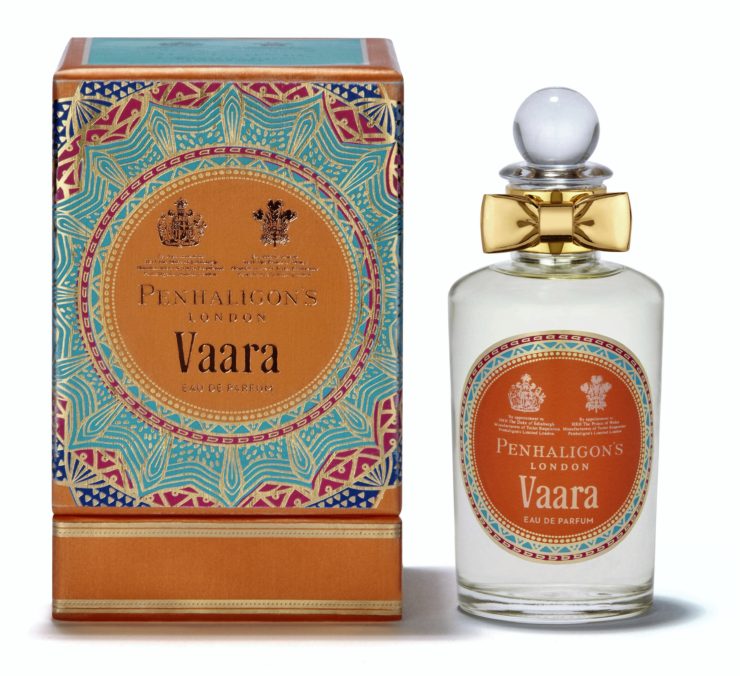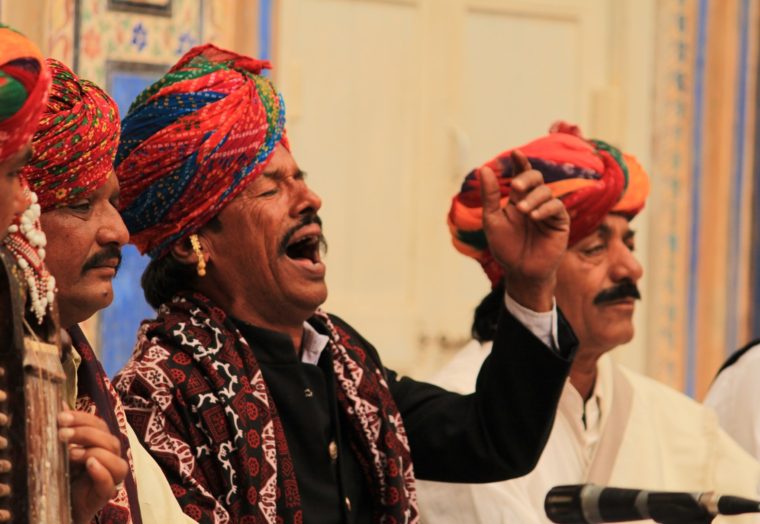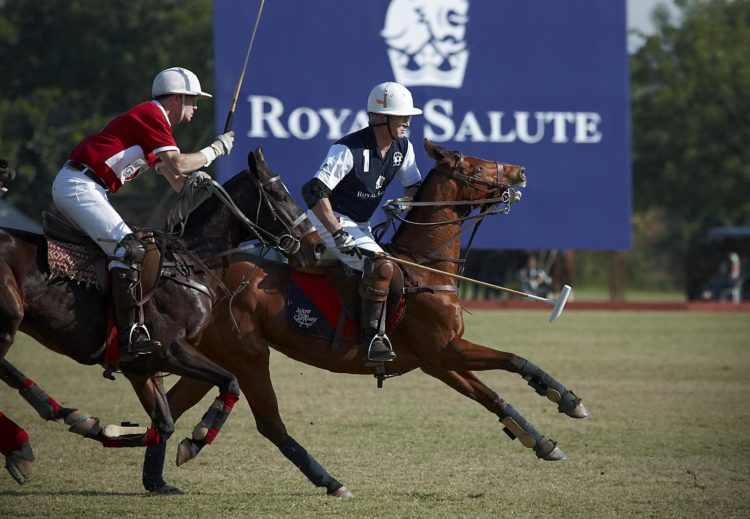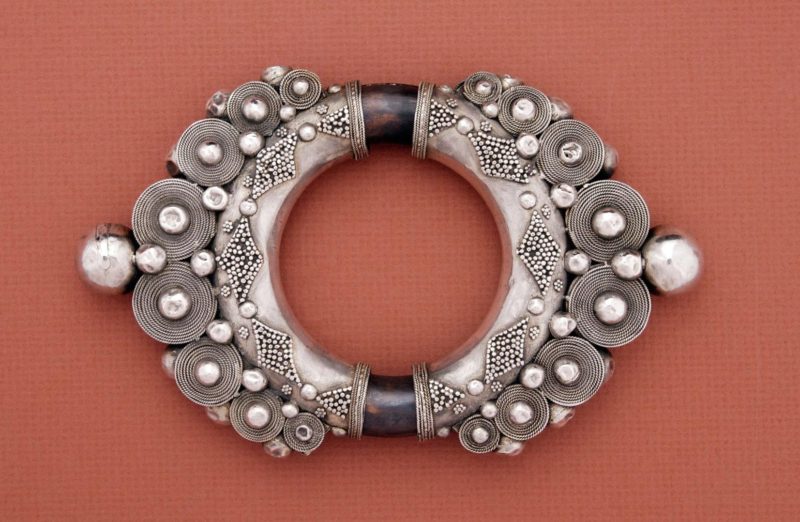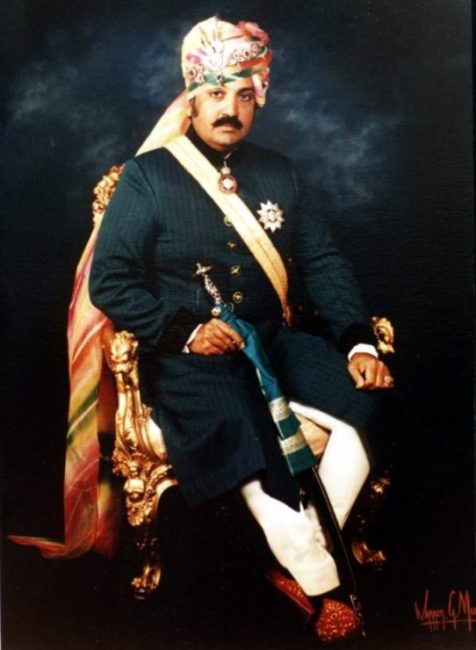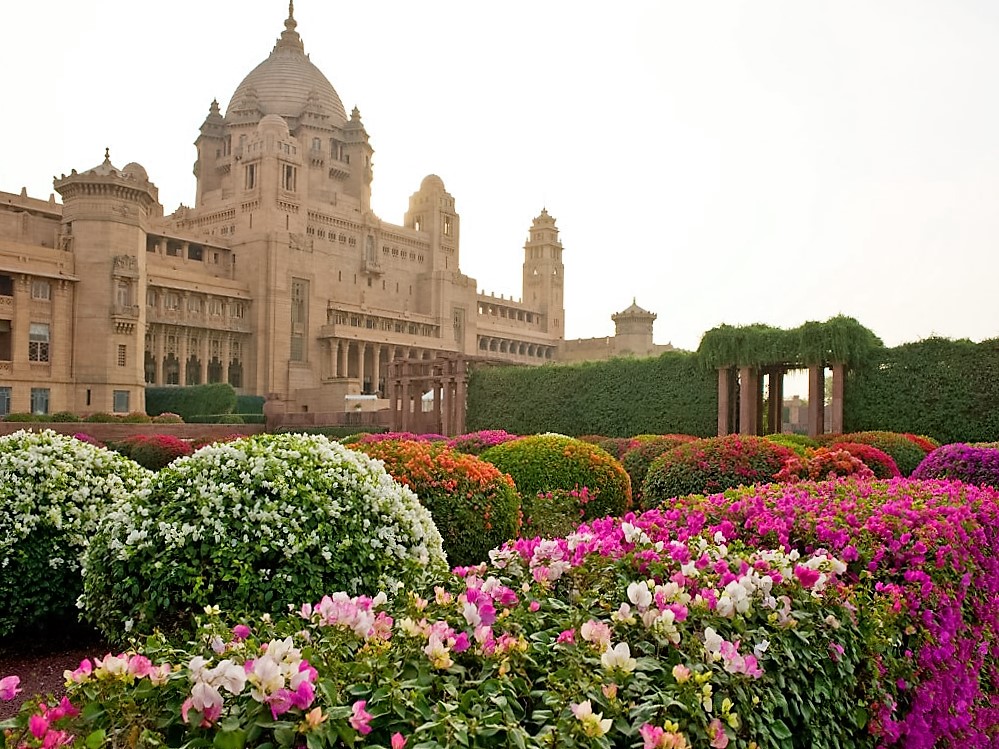Vaara, a fragrance inspired by Jodhpur, introduced by the English perfume house Penhaligon
Jodhpur attracts global A-listers and is considered among the foremost luxury destinations in the world. Here is how Maharaja Gaj Singh of Jodhpur converted his debt-ridden erstwhile kingdom into an international luxury destination.
Not many realised when, and how, Jodhpur transitioned into a regular fixture on the global luxury traveller’s itinerary. Over the years, Maharaja Gaj Singh of Jodhpur was quietly transforming his beautiful city into a world-class destination, in which music, arts, heritage and centuries-old craftsmanship coalesce into a winsome whole.
Today it is considered among the trendiest destinations in India; its annual calendar of events are not just glamorous but attract famous and powerful people from across the world. At the World Sacred Spirit Festival, you will run into top executives from the Ford Foundation, designers, musicians, entrepreneurs, and travellers for whom a holiday in Jodhpur was everything they ever imagined India to be – exotic and beautiful. But it also everything they do not expect it to be – luxurious and offering a glimpse of royalty. In the past, the World Sacred Spirit Festival had been headlined by names like Sting and Mick Jagger, besides a host of talented musicians from countries as far apart as Iran, Egypt, America, France, Bhutan and Turkey. These musicians have also performed at events hosted by the Head Injuries Foundation, which was set up by Maharaja Gaj Singh, the scion of the Rathore clan, the erstwhile royal family of Jodhpur.
Langas of Rajasthan
To many, Jaipur is just another version of Delhi. Jodhpur is the real deal. It has a wealth of art and craftsmanship; it is more exotic than its neighbour, and it attracts the right kind of traveller – someone who is interested in experiencing Indian hospitality and its arts and crafts”
This is the city where supermodel Naomi Campbell decided to throw a glittering birthday party over a year ago – among her invited guests were Kate Moss, Vivienne Westwood, Eva Herzigova, John Galliano and Demi Moore. In the past, Christian Bale and Christopher Nolan have stayed at the Umaid Bhawan Palace Hotel, the gorgeous pink colour art deco-style palace hotel run by the Taj Group.
Maharaja Gaj Singh is among the first of Rajasthani royalty to pioneer the heritage and palace hotel category in India, and a part of the sprawling palace continues to be his family residence, while a third part is a museum.
Last year, the English perfume house Penhaligon introduced a fragrance inspired by Jodhpur, which was named Vaara by Maharaja Gaj Singh, after his granddaughter. Bertrand Duchaufour, a high-profile perfumer credited with several blockbuster perfumes such as Christian Dior’s Fahrenheit, Fahrenheit Zero and Dune, and Givenchy’s Amarigeand is the nose behind this fragrance. He says that the gardens of the Bal Samand Palace, one of Bapji (as Maharaja Gaj Singh is also known) has provided the ingredients for the fragrance, which retails at 130 pounds for 100ml and is also available in the Mehrangarh Museum shop.
Royal Salute World Polo
Jodhpur also has its buzzing polo season and attracts international polo players and aficionados. Miniature paintings in the museum of the architecturally magnificent Mehrangarh Fort, that rises 400 ft above the ground level and towers over the Blue City, reveal that the Rathores, the reigning family of the Jodhpur princely state, first played polo with the Mughals, and then with the British. The city now has a polo team and in the polo season, from December to end February, it hosts several important matches – such as the Royal Salute Maharaja of Jodhpur Polo Cup, hosted by the premium brand from Chivas Regal, and the British Polo Day.
Across Jodhpur, artisans and craftsmen have set up shops that not just sell crafts, precious jewellery, textiles, and beautiful pieces of handcrafted furniture to enthused travellers, but also export to several European countries. Besides, Jodhpur is home to a range of luxury boutique hotels – from Raas, a cool boutique property in the shadow of the Mehrangarh Fort, to Umaid Bhawan and the classic heritage hotel of Ranbanka Palace.
Jodhpur is modern, glamorous, but also Rajasthani in its essence. Besides, it is a perfect place for someone looking for art, culture, different experiences, or for a luxury entrepreneur like me, who wants to not just experience the royal lifestyle but also do business that’s focused on Indian arts and crafts.
Rajasthani Jewelry
At the heart of this transformation is Maharaja Gaj Singh, who, over the past few decades, has painstakingly carved out a niche for this ancient Rajasthani city and the regions that once came under the Jodhpur princely state. He has spurred conservationists and culture theorists to work with him on restoration and preservation projects for the several forts, palaces and monuments that pepper the city and the desert around. The Mehrangarh Museum Trusts he has set up works with not just artisans and craftsmen to produce sleeker, more modern version of Rajasthani crafts which is then sold at the museum shop, but also to conceputalise music, dance and culture festivals that attract the best of world travellers.
At home with international jetsetters and the fashionable crowd, Maharaja Gaj Singh combines the best of his western education, thanks to his Oxford education, with the warmth and royal splendor that one associates with Indian royalty. He has worked like a man possessed by just one dream: to put Jodhpur on the global map.
H.H. Maharaja Gaj Singh Ji
Talking about the earlier days, Maharaja Gaj Singh says that nothing much was happening in Jodhpur in the 1970s. “Jaipur, which is the capital of modern-day Rajasthan, developed really quickly, and then Udaipur came up. At one point, they occupied a larger space in the mind of the tourists. But, not having a capital in Jodhpur actually proved good for us. Jaipur faces large scale migration because it is the capital city and because it is closest to Delhi. Jodhpur’s distance from Delhi has helped us maintain some sort of exclusivity.”
There are several reasons behind the revival of Jodhpur’s fortunes. To understand them, you need to go back in the past and understand the place Jodhpur occupied in Rajathan’s history. “During my grandfather’s time, the Marwar region, in which Jodhpur falls, was well-developed. My grandfather was fond of flying and it was the first city to have an international airport in India. We had a polo team that played globally. Then, after my father (Maharaja Hanwant Singh) died in 1952, the city’s fortune was on a decline. I was a child, and there was no leadership after my father. The capital of modern-day Rajasthan was Jaipur and a lot of development focus shifted there. In India, tourism was focused on Jaipur and Agra,” says Maharaja Gaj Singh. “I came back to Jodhpur after graduating from Oxford in 1970. The first 10 years went into restructuring, creating companies, trusts, in legal battles, etc. Eventually, the government changed, and the new government was more favorably disposed and offered me a posting as a High Commissioner to Trinidad and the surrounding English speaking islands. So, in 1978, I took my family and went to Trinidad. We were there for two years. Before leaving, I signed up with one of the leading hotel companies to operate the palace hotel. With professional management, it grew from then on. Umaid Bhawan Palace hotel was first run by ITC Group, and now we are associated with The Taj Group, which has upgraded it to a large extent.”
Over the years, Maharaja Gaj Singh and his team have worked with the people of Jodhpur, with the artisans, the craftsmen, the musicians, to build a contemporary Jodhpur that preserves its past and its heritage. They have also developed in other ways. Jodhpur is an education hub with a lot of colleges and universities located here.
The hotels and the museum came almost at the same time. “We set up the Mehrangarh Museum Trust (MMT) within the fort, which was also restored. I would say the fort was among the first in India to adopt a Conservation Master Plan,” he adds.
Within Mehrangarh Fort, there is a crafts bazaar where artisans are given direct access to customers. MMT works with artisans to develop high quality products that reflect the region’s craftsmanship and its heritage, and is sold in the fort store. Once, the craftsmen and jewelers here catered to the local market and domestic tourists. Now, most of them export. There is a global demand for their work. MMT also works on other conservation and restoration projects. The Nagaur Fort, Ahhichatragarh (recently shortlisted for the Aga Khan Award for Architecture), besides several other properties that are with the government like Mandore Chatris, Panchkunda Chatris and Sursagar, are managed by the trust.
Umaid Bhawan
“I believe that as a premier institution in the field, Mehrangarh Museum Trust should lead by example and provide further momentum to the conservation and restoration movement in Rajasthan, and indeed all of India. During the initial years of the establishment of the trust, the challenge for us was to meet the expectations of the audiences and present culture in a manner that is engaging and meaningful. Mehrangarh museum has one of the most important and best preserved collections of fine and applied arts from the Rajput-Mughal period of Indian history, during which the Rathore rulers of Jodhpur maintained close links with the Mughal emperors,” says the Maharaja.
According to him, India has a lot – the beaches, the mountains, the forests. “But India is also the oldest living civilization, and culture forms the bedrock of this civilization, which can offer beautiful cultural experiences to travellers that can connect them to our heritage and our arts. The world traveller imagines India to be what Rajasthan is: warm, hospitable and colourful. In India, every city has a character, certain unique values, and is rich in unique culture, craft and architectural heritage. It is important that we recognise these elements and work towards preserving them. So, once the core values have been identified, one need to communicate these values to the people. I personally feel that this communication needs to begin at school level. It is very important to engage the young population in preserving the art, culture and heritage of the country.”

